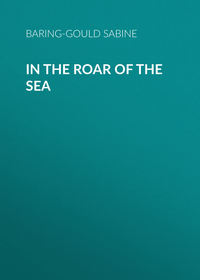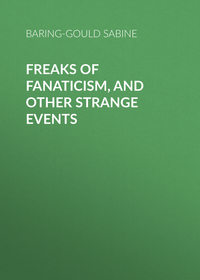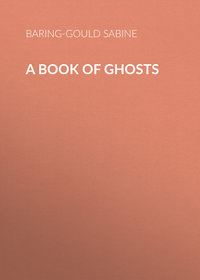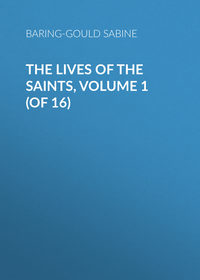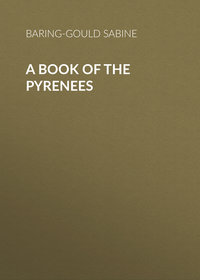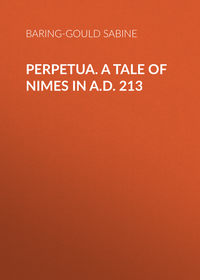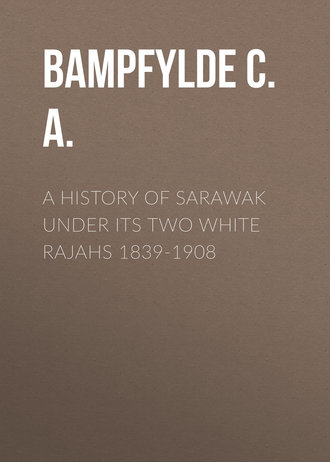 полная версия
полная версияA History of Sarawak under Its Two White Rajahs 1839-1908
The Sea-Dayaks are the collectors of jungle produce, in search of which they go on expeditions far into the interior – to Sumatra, the Malayan States, and North Borneo – and are away for months at a time.
The Dayak custom of head-hunting is founded on the same principle as that of scalp-hunting among the North-American Indians. A young man formerly found it difficult to obtain a wife till he had got at least one head to present to the object of his heart as token of his prowess; but it was quite immaterial whether the head was that of man or woman, of old or young. If a Dayak had lost a near relative it became his duty to obtain a head, for until this was accomplished, and a head feast had been given, the family must remain in mourning, and the departed relative would have no attendant in Sembayan (the shades); and so in the event of a chief dying it was incumbent upon the warriors of the tribe to procure one or more heads, in order that his spirit should be properly attended by the spirits of those sacrificed in his honour. Thus head-hunting became more or less a natural instinct, and an obligatory duty.
The ancient Chinese jars,32 held in great esteem among the natives, and very highly prized, being supposed to be possessed of supernatural powers and healing virtues,33 are of various kinds and value. The Gusi is the most valued, and is treated with great care and veneration, and stands about eighteen inches high. Then comes the Lingka, then the Benaga,34 about two feet high, ornamented with the Chinese dragon. The Rusa35 is the least valued. From a note made in 1890 these are the lowest prices they fetch – Gusi tuak, $1000; Gusi bulan, $700; Gusi chendanum, $500; Galagiau, $400; Lingka, $310; Rusa, $150, In 1890 $7 = £1. These jars are all brown in colour. The Dayaks and Kayans possess a few fine blue and white, and pink and white, old Chinese jars, some over five feet in height.
About forty years ago an enterprising Chinese petty dealer took samples of the jars to China and had clever imitations made. He realised a large sum by the sale, and started as a merchant on a large scale, grew rich, waxed fat, and became the leading and wealthiest Chinese merchant in Kuching. The Malays are clever in "faking" jars, especially such as are cracked, but the Dayaks are not now to be deceived by them.
The Dayak village, like those of all interior tribes, is a communal establishment. It does not consist of separate huts occupied by any one family, but of large common halls on platforms, sometimes 800 ft. long, upon which the dwelling-rooms abut. They are constructed of wood, and are supported on poles sometimes 20 ft. to 40 ft. above the ground, the poles being from 6 to 18 inches in diameter. The largest will contain some 300 people. The following is a description of the Dayak village of Tunggang from the late Rajah's journal: —
Tunyang36 stands on the left hand (going up) close to the margin of the stream, and was enclosed by a slight stockade. Within this defence there was one enormous house for the whole population. The exterior of the defence between it and the river was occupied by sheds for prahus (boats), and at each extremity were one or two houses belonging to Malay residents.
The common habitation, as rude as it is enormous, measures 594 ft. in length, and the front room or street is the entire length of the building, and 21 feet broad. The back part is divided by mat partitions into the private apartments of the various families, and of these there are forty-five separate doors leading from the public apartment. The widowers and the young unmarried men occupy the public room, as only those with wives are entitled to the advantage of a separate room. The floor of the edifice is raised twelve feet from the ground, and the means of ascent is by the trunk of a tree with notches cut in it – a most difficult, steep, and awkward ladder. In front is a terrace fifty feet broad, running partially along the front of the building, formed like the floors, of split bamboo. This platform, as well as the front room, besides the regular inhabitants, is the resort of dogs, birds, monkeys, and fowls, and presents a glorious scene of confusion and bustle. Here the ordinary occupations of domestic labour are carried on. There were 200 men, women, and children counted in the room, and in front, whilst we were there in the middle of the day; and allowing for those who were abroad, or then in their own rooms, the whole community cannot be reckoned at less than 400 souls. The apartment of their chief is situated nearly in the centre of the building, and is larger than any other. In front of it nice mats were spread on the occasion of our visit, whilst over our heads dangled about thirty ghastly skulls, according to the custom of these people.
The Malay is the latest immigrant. He is of mixed breed, and the link that holds the Malays together is religion, for they are Mahomedans, whereas the Kayans, Land and Sea-Dayaks, and other tribes, are pagans. To accept their own traditions, the Bruni Malays came from Johore, whereas the Sarawak Malays, like those of the Malay peninsula, came direct from the ancient kingdom of Menangkabau. Between them there is a very marked difference in language, character, and appearance. Whence the proto-Malay stock came is a moot point, but it may be of Mongolian origin, subsequently blended with many other distinct ethnic types, such as the Arab and Hindu, and in the case of the Bornean Malay with the Indonesian peoples of their and the neighbouring islands. The Malays form the main population of Kuching, the capital, and of the towns Sadong, Simanggang, Kalaka, and Sibu. They have villages on the Lundu, Saribas, and lower Rejang, are scattered along the coast between Capes Datu and Sirik, and are to be found in the principal settlements beyond. The Malay has been very variously judged. The Malay Pangiran, or noble, was rapacious, cruel, and often cowardly. But he had a grace of manner, a courtesy, and hospitality that were pleasing as a varnish. The evil repute that the Malay has acquired has been due to his possession of power, and to his unscrupulous use of it to oppress the aboriginal races. But the Malay out of power is by no means an objectionable character. Sir James Brooke, the first Rajah, thus paints him: —
The feeling of the Malay fostered by education is acute, and his passions are roused if shame be put upon him; indeed the dread of shame amounts to a disease, and the evil is that it has taken a wrong direction, being more the dread of exposure or abuse, than shame or contrition for any offence. Like other Asiatics truth is a rare quality among them, and they have neither principle nor conscience when they have the means of oppressing an infidel.
They are thus depicted by Mr. Horace St. John in a work somewhat ambitiously entitled, The Indian Archipelago, its History and present State, vol. ii. p. 267 (published 1853).
Under the heading "Malays," we find the following: —
The Malays are Mahomedans, living under the rule of the Prophet's descendants, a mongrel race of tyrants, gamblers, opium-smokers, pirates, and chiefs, who divide their time between cockfighting, smoking, concubines, and collecting taxes.
That Mr. Horace St. John had never been in the Archipelago to which his history relates, was doubtless a matter of little consequence to many of his home-staying contemporaries. Sir Spenser St. John, brother to the author of the above-quoted Indian Archipelago, etc., who certainly wrote from a long personal experience of the people and country, offers us in his Forests of the Far East an opinion on the character and conduct of the Malay from which every one who has lived amongst these people will find no important cause to differ. Sir Spenser writes: —
The Malays are faithful to their relatives and devotedly attached to their children. Remarkably free from crimes, and when they are committed they generally arise from jealousy. Brave when well led, they inspire confidence in their commanders; they are highly sensitive to dishonour, and tenacious as regards their conduct towards each other, and being remarkably polite in manner, they render agreeable all intercourse with them. Malays are generally accused of great idleness, and in some sense they deserve it; they do not like continuous work, but they do enough to support themselves and families in comfort, and real poverty is unknown among them.
The author here refers to the Malays of Sarawak.
Sir W. H. Treacher,37 who knows the Malay intimately, paints him in favourable colours, now that he is restrained from tyrannising over the weak. He says: —
I am frequently asked if treachery is not one of their characteristics, and I unhesitatingly answer No. This particular misconception was probably initiated by the original merchant-adventurers, and we can imagine what a reception a body of strange, uninvited, white infidels would receive at the hands of Mahomedan Malays, whose system of warfare, taking its rise from the nature of the thickly jungle-covered country they inhabit, is adapted more for ambuscade than for fighting at close quarters. Add to that, being Mahomedans, they were by their religion justified in indulging in piracy and murder where the victims were infidels. The Malay is possessed of at least as much passive courage as the average Englishman, and is probably less troubled by the fear of death and the hereafter than many Christians.
On the other hand I must admit that the Malay, owing to his environment – the balmy climate making no severe calls upon him in the matters either of food, artificial warmth, or clothing, has not the bustling energy of the white man, nor the greed for amassing wealth of the Chinaman, nor does he believe in putting forth unnecessary energy for a problematical gain; he is like the English tramp who was always willing – that is, to look on at other people working, or like that one who complained that he was an unfortunate medium, too light for heavy work, and too heavy for light work.
The natural savagery of the Malay continually threatens to break out, and not infrequently does so in the form of the amok (running amuck), the national Malay method of committing suicide.
Apart from this tendency, when under control the Malay character has much in common with the Mongol, being, under ordinary circumstances, gentle, peaceable, obedient, and loyal, but at the same time proud and sensitive, and with strangers suspicious and reserved.
The Malays can be faithful and trustworthy, and they are active and clever. Serious crime among them is not common now, nor is thieving. They have a bad propensity of running into debt, and obtaining advances under engagements which they never fulfil. They make good servants and valuable policemen. All the Government steamers are officered and manned throughout by Malays, and none could desire to have better crews. They are the principal fishermen and woodsmen. Morality is perhaps not a strong point with them, but drinking is exceptional, and gambling is not as prevalent as it was, nor do they indulge in opium smoking.
With regard to the Chinaman, it will be well to let the present Rajah speak from his own experience. He says that —
John Chinaman as a race are an excellent set of fellows, and a poor show would these Eastern countries make without their energetic presence. They combine many good, many dangerous, and it must be admitted, many bad qualities. They are given to be overbearing and insolent (unless severely kept down) nearly to as great a degree as Europeans of the rougher classes. They will cheat their neighbours and resort to all manner of deception on principle. But their redeeming qualities are comparative charitableness and liberality; a fondness for improvements; and, except in small mercantile affairs or minor trading transactions, they are honest.
They, in a few words, possess the wherewithal to be good fellows, and are more fit to be compared to Europeans than any other race of Easterns.
They have been excluded as much as possible from gaining a footing in Batavia,38 under the plea of their dangerous and usurious pursuits; but the probability is that they would have raised an unpleasant antagonism in the question of competition in that country. The Chinaman would be equal to the Master, or White Man, if both worked fairly by the sweat of his brow. As for their usury, it is not of so dangerous a character as that which prevails among the Javanese and the natives.
Upon my first arrival I was strongly possessed by the opinion that the Chinamen were all rascals and thieves – the character so generally attached to the whole race at home. But to be candid, and looking at both sides, I would as soon deal with a Chinese merchant in the East as with one who is European, and I believe the respectable class of Chinese to be equal in honesty and integrity to the white man.
The Chinese may be nearly as troublesome a people to govern as Europeans, certainly not more so; and their good qualities, in which they are not deficient, should be cherished and stimulated, while their bad ones are regulated by the discipline of the law under a just and liberal government. They are a people specially amenable to justice, and are happier under a stringent than a lenient system.
Of the Chinese the Sarawak Gazette (November 1, 1897) says: —
The characteristics of this extraordinary people must at once strike the minds of the most superficial of European residents in the East. Their wonderful energy and capacity for work; their power of accumulating wealth; their peculiar physical powers, which render them equally fertile, and their children equally vivacious, on the equator as in more temperate regions, and which enable them to rear a new race of natives under climatic conditions entirely different from those under which their forefathers were born, are facts with which we are all acquainted. Their mental endowments, too, are by no means to be despised, as nearly every year shows us, when the results of the examination for the Queen's Scholarship of the Straits Settlements are published, and some young Chinese boy departs for England to enter into educational competition with his European fellows.
Chinese get on well with all natives, with whom they intermarry, the mixed offspring being a healthy and good-looking type. They form the merchant, trading, and artisan classes, and they are the only agriculturists and mine labourers of any worth. Without these people a tropical country would remain undeveloped.
The only census that appears to have been attempted in Sarawak was taken in 1871. Judging by the report that was published in the Gazette this census was made in a very imperfect manner.39 Of the interior population it includes Sea-Dayaks, but no means were obtainable for ascertaining the numbers of Kayans, Kenyahs, and many other tribes that go to make up the population of the State. It makes no separate mention of the large coast population of the Melanaus, who were presumably lumped with the Malays.
The census gives the following figures: —
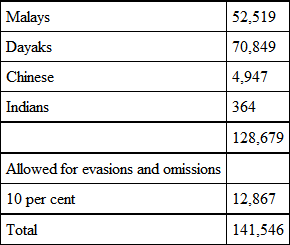
The report concedes it was the generally received opinion that the population was nearer 200,000, and if we include the Kayans, Kenyahs, etc., and accept the approximate correctness of the above figures, that estimate would be about correct.
In 1871, the State extended as far as Kedurong Point only, but since that the territorial area has been nearly doubled. The population is now estimated at 500,000, though this is probably too liberal a calculation, and the following is a fairer estimate: —
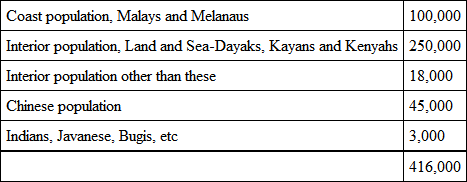
The names by which the various tribes are known are those given to them by others, mostly by the coast people, or are taken from the name of the river on which they reside, or from which they came. Daya (as it should be spelt, and as it is pronounced) in the Melanau and Bruni Malay dialect means "land," "in-land." So we have Orang daya, an inlander. Ka-daya-an is contracted into Kayan; Ukit and Bukitan are from the Malay word bukit– a hill; and tanjong is the Malay for a cape or a point round which a river sweeps. Hence Orang Ukit or Bukitan, a hill-man,40 and Orang Tanjong, riverside people.
As in ancient Germany the districts were known by the names of the rivers that watered them, and each was a gau, so it is in Borneo, where the rivers are the roads of communication, and give their names to the districts and to the people that inhabit them. Indeed, in Borneo one can see precisely at this day what was the ancient Gau-verfassung in the German Empire.
The area of Sarawak is about 50,000 square miles, and the coast line about 500 miles.
The climate is hot and humid; it is especially moist during the N.E. monsoon, and less so during the S.W. monsoon. The former commences and the latter ends sometimes early and sometimes late in October, and in April the seasons again change. The months of most rain are December, January, and February; from February the rainfall decreases until July, the month of least rain, and increases gradually after that month. The average yearly rainfall is 160 inches. The maximum in any one year, 225.95 inches, was recorded in 1882, and the minimum 102.4 in 1888. The heaviest rainfall for one month, 69.25 inches, occurred in January, 1881, and the least,66 inches, in August, 1877. The most in one day was 15.3 inches on February 8, 1876. Rain falls on an average 226 days in the year. These notes are taken from observations made in Kuching extending over thirty years.41 At Sibu, the average rainfall for five years was 116 inches, at Baram 92 inches, and at Trusan 167 inches. Except in the sun at mid-day and during the early hours of the afternoon the heat is hardly ever oppressive, and the mornings, evenings and nights are generally cool. In 1906, the maximum average temperature was 91°.6, and the minimum 71°.2 Fahrenheit; the highest reading was 94° in May, and the lowest 69°.6 in July.42
In few countries are thunderstorms more severe than in Borneo, but deaths from lightning are not very common, and hail falls so rarely that when it does fall it is an awe-inspiring object to some natives. Archdeacon Perham records that during a very severe hailstorm in 1874 some Dayaks collected the hailstones under the impression that they were rare charms, whilst others fled from their house, believing that everybody and everything in it would be turned into a petrified rock, a woeful monument to future generations. To avert this catastrophe they boiled the hailstones and burnt locks of their hair.43
CHAPTER II
EARLY HISTORY
Borneo was known to the Arabs many centuries ago, and Sinbad the Sailor was fabled to have visited the island. It was then imagined that a ship might be freighted there with pearls, gold, camphor, gums, perfumed oils, spices, and gems, and this was not far from the truth.
When Genghis Khan conquered China, and founded his mighty Mogul Empire (1206-27), it is possible that he extended his rule over Borneo, where Chinese had already settled. Kublai Khan is said to have invaded Borneo with a large force in 1292; and that a Chinese province was subsequently established in northern Borneo, in which the Sulu islands were included, is evidenced by Bruni and Sulu traditions. The Celestials have left their traces in the name of Kina Balu (the Chinese Widow) given to the noble peak in the north of the island,44 and of the rivers Kina-batangan (the Chinese river) and Kina-bangun on the east coast of Borneo, and certain jars, mentioned in chapter I. p. 26, ornamented with the royal dragon of China, are treasured as heirlooms by the Dayaks. At Santubong, at the mouth of the Sarawak river, Chinese coins dating back to B.C. 600 and 112, and from A.D. 588 and onwards, have been found, with many fragments of Chinese pottery. The name Santubong is itself Chinese, San-tu-bong, meaning the "King of the Jungle" in the Kheh dialect, and the "Mountain of wild pig" in the Hokien dialect.
Besides the antique jars, the art of making which appears to have been lost, further evidence of an ancient Chinese trade may be found in the old and peculiar beads so treasured by the Kayans and Kenyahs. These are generally supposed to be Venetian, and to have been introduced by the Portuguese. Beccari (op. cit. p. 263) mentions that he had heard or read that the Malay word for a bead, manit (pronounced maneet), was a corruption of the Italian word moneta (money), which was used for glass beads at the time when the Venetians were the foremost traders in the world. But he points out "that the Venetians made their beads in imitation of the Chinese, who it appears had used them from the remotest times in their commercial transactions with the less civilized tribes of Southern Asia and the Malay islands." And it was by the Chinese these beads were probably introduced into Borneo; manit is but the Sanskrit word mani, meaning a bead.45
From the Kina-batangan river came the Chinese wife of Akhmed, the second Sultan of Bruni. She was the daughter of Ong Sum Ping, a Chinese envoy, and from her and Sultan Akhmed the Bruni sultans down to the present day, and for over twenty generations, trace their descent on the distaff side, for their daughter married the Arab Sherip Ali, who became Sultan in succession to his father-in-law, and they were the founders of the present dynasty.46 Sulu chronicles contain the same legend; and according to these Ong Sum Ping, or Ong Ti Ping, settled in the Kina-batangan A.D. 1375. He was probably a governor in succession to others.
The Hindu-Javan empire of Majapahit in Java certainly extended over Borneo, but it left there no such stately temples and palaces as those that remain in Java, and the only reminiscences of the Hindu presence in Sarawak are the name of a god, Jewata,47 which lingers among the Dayaks, a mutilated stone bull, two carved stones like the lingams of the Hindus; and at Santubong, on a large immovable rock situated up a small stream, is a rudely carved statue of a human figure nearly life-size, with outstretched arms, lying flat, face downwards, in an uncouth position, perhaps commemorative of some crime.48
Santubong is at the eastern mouth of the Sarawak river, and is prettily situated just inside the entrance, and at the foot of the isolated peak bearing the same name, which rises boldly out of the sea to a height of some 3000 feet. This place, which apparently was once a Chinese, and then a Hindu-Javan colony, is now a small fishing hamlet only, with a few European bungalows, being the sea-side resort of Kuching; close by are large cutch works. In ancient days, judging by the large quantity of slag that is to be seen here, iron must have been extensively mined.
Recently some ancient and massive gold ornaments, seal rings, necklets, etc., were exposed by a landslip at the Limbang station, which have been pronounced to be of Hindu origin; and ancient Hindu gold ornaments have been found at Santubong and up the Sarawak river.
Bruni had been a powerful kingdom, and had conquered Luzon and the Sulu islands before it became a dependency of Majapahit, but at the time of the death of the last Batara49 of that kingdom, Bruni ceased to send tribute. The empire of Majapahit fell in 147850 before the Mussulman Malays. The origin of the Malays is shrouded in obscurity; they are first heard of in Sumatra, in Menangkabau,51 from whence they emigrated in A.D. 1160 to Singapura, "the Lion city." They were attacked and expelled in 1252 by the princes of Majapahit, when they settled in Malacca. There they throve, and embraced the religion of Islam in 1276.
From Sumatra and the Malay peninsula the Malays continued to spread, and gradually to establish sultanates and states under them. The process by which this was effected was seldom by conquest, but by the peaceful immigration of a few families who settled on some unoccupied part of the coast within the mouth of a river. Then, in the course of time, they increased and spread to neighbouring rivers, and formed a state. By subjecting the aboriginal tribes of the interior, and by compulsion or consent, including weaker Malayan states of like origin, by degrees some of these states expanded into powerful sultanates with feudal princes under them.


